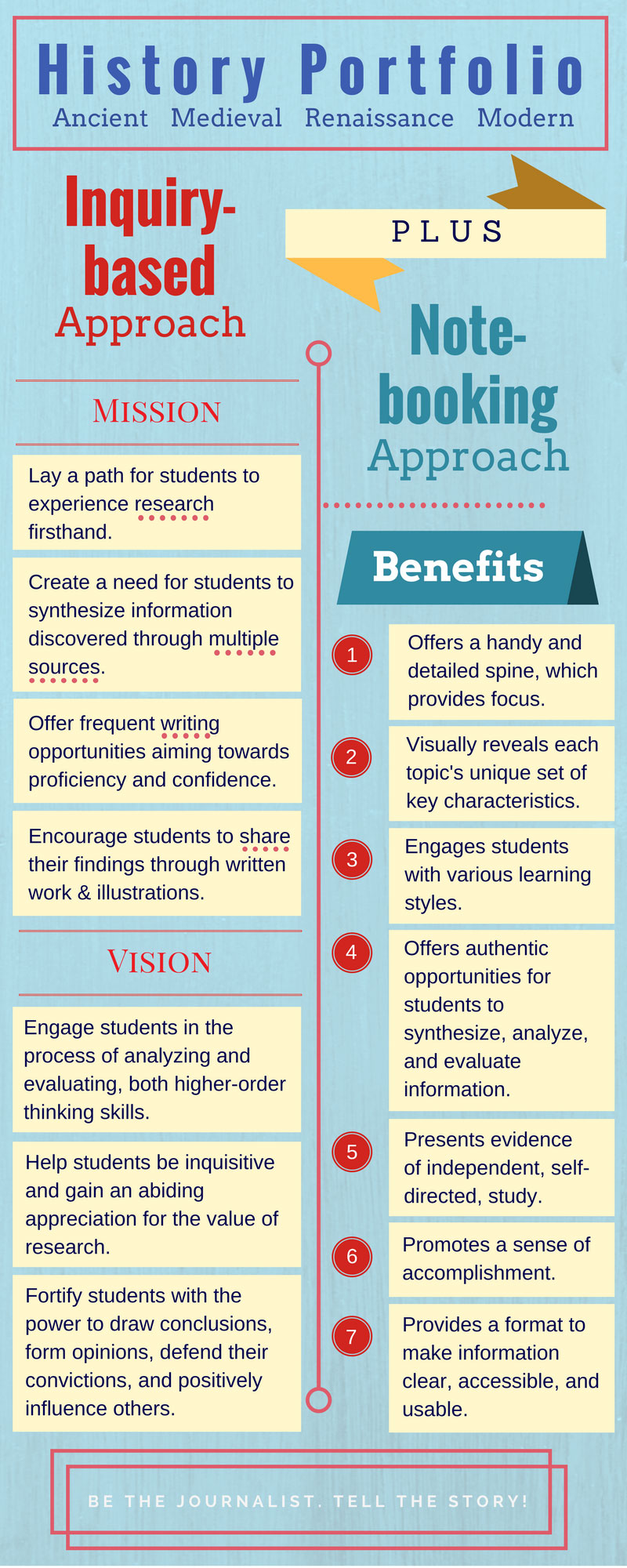
History Portfolio
Combining an Inquiry-based Approach with a Notebooking Approach
An Inquiry-based Approach
My mission, in writing and publishing the History Portfolios, has always been to lay a path for students to experience research first-hand. A big motivating desire for me was to offer something that would foster an inquisitive nature, promote industry and a willingness to dig for information, and enkindle an abiding appreciation for the value of research.
As students work through the individual Units, or the History Portfolios—Ancient, Medieval, Renaissance, and Modern—they will have frequent, weekly, research opportunities. Initially, the parent will locate various sources, facilitating and modeling the research. But, bit by bit, the student will gain independence. As the students participate in research, they will not only gain knowledge, but incrementally acquire the research skills essential for a lifetime of self-directed study.

Click HERE to read about how to acclimate students to the process of research.
Completing a Portfolio requires research, but it also requires writing. Specifically, it requires that students synthesize information discovered through research, and then to share their findings through written work and illustrations. Writing is a key characteristic of the program. This is partly because it is through pre-writing and writing that information, discovered through research, can be more fully understood. But, it is also that through writing students can ultimately reap the rewards of their research by being able to draw conclusions, form opinions, defend their convictions, and positively influence others. Writing brings research data to life!
Be the journalist. Tell the Story!
A Notebooking Approach
As I mentioned above, the Portfolio’s defined course of study offers opportunities to research and write. But, the notebooking aspect of the Portfolios offers a few additional, and unique, benefits.
As a foundation, the structure of the Portfolios, with defined topics and subtopics, initiates a system of order. And, within each chapter the system of frames, indicating further subtopics, contributes to a sense of order. This clearly defined course of study releases the student to directly plunge into research without the laborious task of deciding “what” to research. The notebooking pages provide “focus”. That’s the first benefit.

The establishment of this system of order, or spine, visually reveals to the student how each topic has its own unique set of key characteristics. This leads to increased knowledge and comprehension. But, interacting with this spine has a far greater potential to unlock higher-order thinking. By researching using multiple sources, synthesizing and ordering information, and then expressing themselves through writing and illustrating, students are challenged to internalize information, and make sense of it. Notebooking, using the Portfolios, engages students in the process of analyzing and evaluating.
But, there is another benefit of the notebooking approach which I think is tremendously exciting. By researching using multiple sources, and adding various reports, maps, images, definitions, etc. to the Portfolios, information is synthesized and ordered. The Portfolio’s notebooking pages provide a home so that information can be gathered from disarray, be brought together to form a focused and comprehensible story, and then presented in a format that is accessible by others.
This “physical” offering, which the notebooking pages make possible, also offers something meaningful to the student. It is enormously satisfying to gather a library of accomplishments—to possess evidence of independent, self-directed study—and to be able to share this work with others in a format that holds value.
History Portfolio: a book to treasure.
